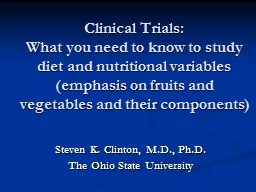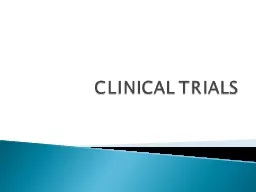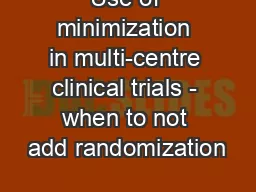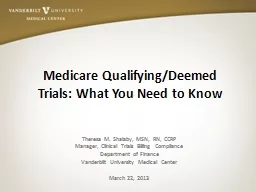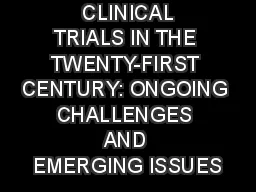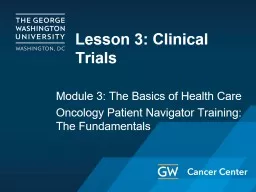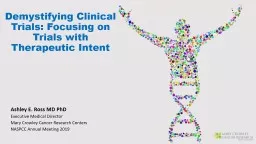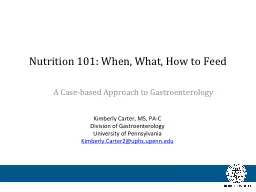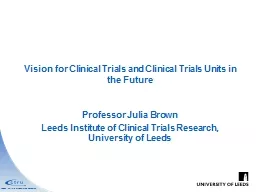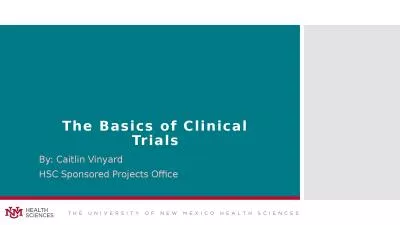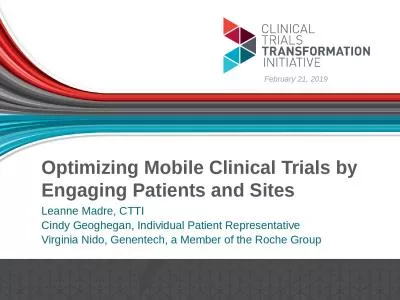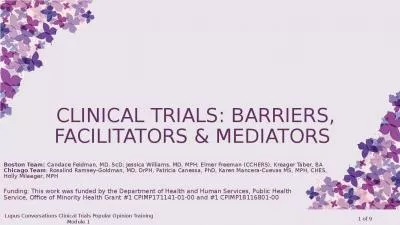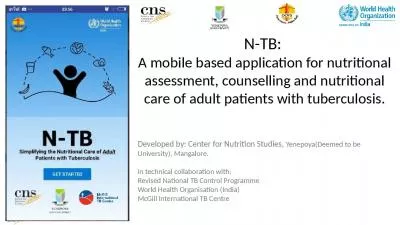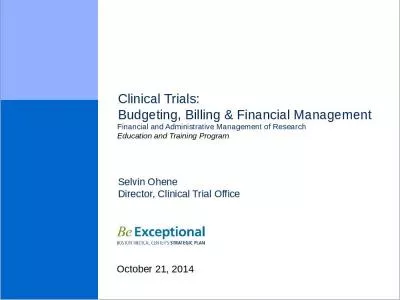PPT-Clinical Trials: What you need to know to study diet and nutritional variables
Author : startse | Published Date : 2020-06-15
emphasis on fruits and vegetables and their components Steven K Clinton MD PhD The Ohio State University 2 Introduction 3 What is a Clinical Trial Essential Characteristics
Presentation Embed Code
Download Presentation
Download Presentation The PPT/PDF document "Clinical Trials: What you need to know ..." is the property of its rightful owner. Permission is granted to download and print the materials on this website for personal, non-commercial use only, and to display it on your personal computer provided you do not modify the materials and that you retain all copyright notices contained in the materials. By downloading content from our website, you accept the terms of this agreement.
Clinical Trials: What you need to know to study diet and nutritional variables: Transcript
Download Rules Of Document
"Clinical Trials: What you need to know to study diet and nutritional variables"The content belongs to its owner. You may download and print it for personal use, without modification, and keep all copyright notices. By downloading, you agree to these terms.
Related Documents

